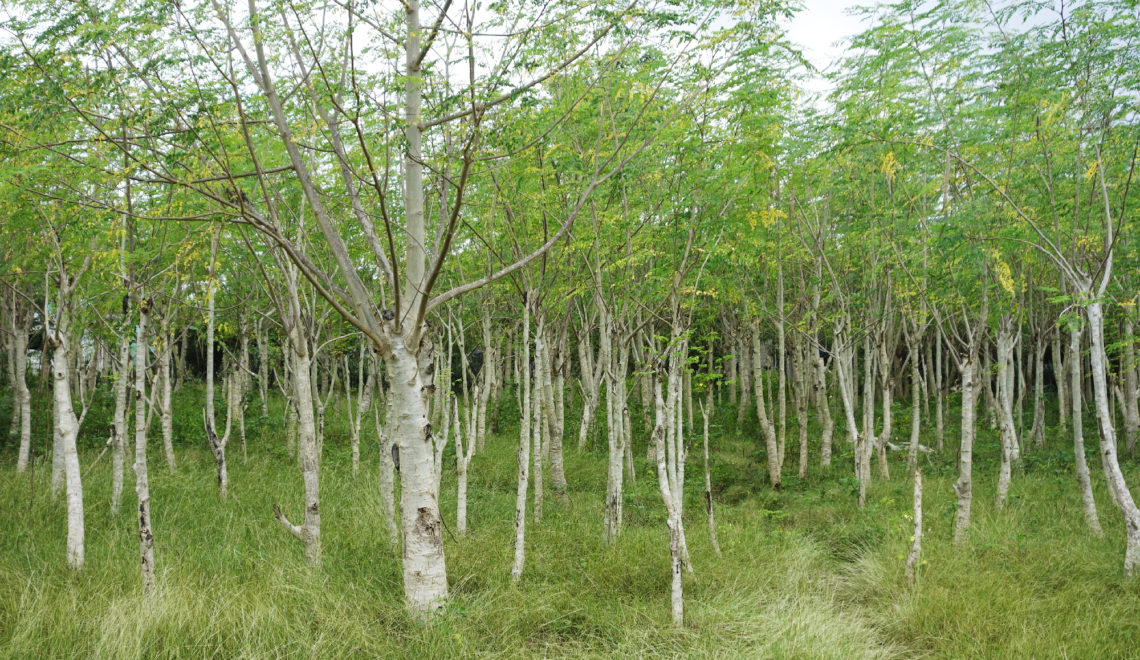
Moringa is a super food as one serving can provide one-quarter of your daily vitamin C, about half of your daily potassium and magnesium, almost three-quarters of your daily iron, and all the calcium and vitamin A you need in a day. A serving of Moringa also provides essential amino acids and fatty acids, and other antioxidants and nutrients. It is extremely nutritious and has the potential to supplement the diets of Americans, but moringa is more than that. Moringa has the potential to battle malnutrition where it natively grows and create sustainable livelihoods for those who farm it. Moringa is not just the new health fad of developed countries; it is much more than that.
In the 1960s, the Green Revolution swept over the developing countries of Asia and Africa. It was a great initiative to increase agriculture production around the world particularly in developing countries. The Green Revolution led by Norman Borlaug implemented the use of high-yielding cereal grains, vast irrigation infrastructure, hybridized seeds, fertilizers, pesticides, and modern management structures in developing countries. This led to increased food production and saved the lives of millions of people who would have otherwise starved. The Green Revolution seemed to be the solution, but the problem was more complicated than that.
In the decades after the Green Revolution, agriculture in many developed countries seemed to not be going as well. Droughts came and destroyed crops of corn and wheat, small farmers went into debt trying to purchase seeds, fertilizer, and pesticides, and the gap between the rich and poor widened. Many areas were able to adopt these western-style practices more easily than others due to political reasons or because they had better luck with the climate. For others, they became not much better off than before the Green Revolution started. What is more, these agricultural practices were not sustainable. They depleted soil quality and water sources, released harmful chemicals into the environment through fertilizers and pesticides, and did not provide enough essential nutrients to combat malnutrition. Why wouldn’t the crops grow? Why were they so difficult to grow and required so many extra inputs like fertilizer, irrigation, and pesticides? Many people saw the answer and it was quite simple: cereal grains, such as wheat and corn, are not native to most regions of Asia and Africa.
Many areas of developing countries have turned to the native plants in their area as a food source. In Cameroon, the lives of people greatly changed when they learned how to domesticate native fruit trees such as African plums, bush mangoes, chocolate berries, and gingerbread plums in the late 1990s and 2000s. People there not only eat the fruit from these trees, but sell them to earn money and create businesses. The domestication of some of the estimated 3,000 species of wild fruit in Africa has helped to combat malnutrition and create dependable food supplies in areas that need it most. Moreover, business from growing and selling fruit in Cameroon and places like it has allowed farmers to earn money to pay for healthcare, their children’s education, and much more. Although these plants may or may not be as nutrient dense as moringa, they still follow the same principle: grow and use what is available for food to combat malnutrition and create profit rather than buying into crops that are unreliable to grow.
The Green Revolution had the right idea when it came to encouraging agriculture and helping to feed the hungry. What it failed to see was that not all plants are suited to grow everywhere in the world, at least not without an abundance of water, fertilizers, and pesticides. The native plants of Africa and Asia are suited to the climate of those areas. Many fruit trees and even moringa require little water and low-quality soil to grow. Such plants can be vastly less resource and labor intensive and just so happen to produce fruits, roots, and leaves that are extremely nutritious.
To conclude, moringa is not just a super nutritious supplement that can be bought in the U.S. and other developed countries. It is a life-saving organism in many ways: it is native to the areas of Africa where it grows very well with little water and soil, it is sustainable, it is highly nutritious and can fight hunger where it is grown and used, and it can provide income to those who farm it and other plants. The farming of these plants can help people lead lives they never thought possible. While moving forward into a more sustainable planet where everyone has enough food, it is important to consider that not one solution will be able to solve every food and resource-related problem, but that different areas require different solutions suitable to their needs.
Sources:
Pye-Smith, Charlie. “Chocolate Berries! Gingerbread Plums!” New Scientist (2009): 52-55. Web.
Thurow, Roger, and Scott Kilman. Enough: Why the World’s Poorest Starve in an Age of Plenty. New York: PublicAffairs, 2009. Print.










A study made on MX3 Capsule done in America and published in the Journal of Aging Resarch and Clinical Practice. It was concluded that MX3 Capsule helps improve mobility together with a good and healthy diet.
What an incredible article about how Moringa can be a sustainable source for many people. It really is a plant that more people need to know about!